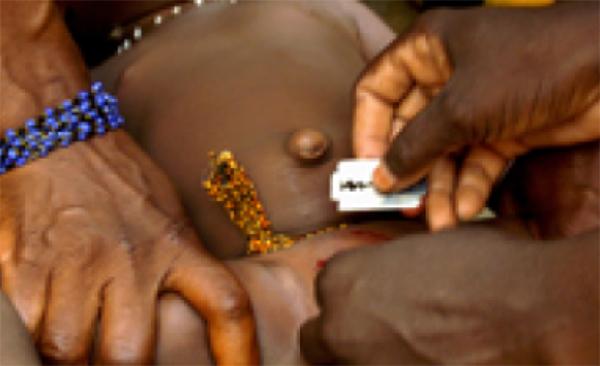The study shows that FGM remains legal in five of the 28 countries where it is most practised.
A new study has shown that Female Genital Mutilation (FGM) is a leading cause of death in the countries where it is practised, with over 44,000 additional women and young girls dying yearly.
According to the study by researchers from the Universities of Birmingham, United Kingdom (UK), and Exeter, FGM accounts for more deaths in these countries than any cause other than enteric infections – usually from consuming contaminated food or water – respiratory infections, or malaria.
The study shows that FGM remains legal in five of the 28 countries where it is most practised.
In a statement obtained by PREMIUM TIMES on Thursday, the researchers called for FGM to be made illegal in Mali, Malawi, Chad, Sierra Leone, and Liberia, “given that legal change can lead to cultural change.”
The study shows that FGM remains legal in five of the 28 countries where it is most practised.
A new study has shown that Female Genital Mutilation (FGM) is a leading cause of death in the countries where it is practised, with over 44,000 additional women and young girls dying yearly.
According to the study by researchers from the Universities of Birmingham, United Kingdom (UK), and Exeter, FGM accounts for more deaths in these countries than any cause other than enteric infections – usually from consuming contaminated food or water – respiratory infections, or malaria.
The study shows that FGM remains legal in five of the 28 countries where it is most practised.
In a statement obtained by PREMIUM TIMES on Thursday, the researchers called for FGM to be made illegal in Mali, Malawi, Chad, Sierra Leone, and Liberia, “given that legal change can lead to cultural change.”
“An important first step would be for FGM to be made illegal in the countries where it is within the law, given that legal change can lead to cultural change,” he said.
FGM
Globally, over 200 million women and girls have been subjected to FGM – a practice which often happens in unsanitary conditions and without clinical supervision with consequent severe pain, bleeding, and infection.
It is known to lead to obstetric complications, reductions in sexual function, and other long-term physical and mental health problems.
The World Health Organisation (WHO) estimates the aggregate cost of medical treatment for girls and women after FGM was $1.4 billion in 2018. However, until now, there has been no systematic evidence about the role of FGM in the global epidemiology of child mortality – reflecting difficulties in measuring the practice.
Mr Rockey said a key social dimension of FGM is how it impacts marriage, as it influences women’s marriage opportunities in Western Africa – due to patriarchal culture and institutions.
“Our research suggests that decisions about FGM may reflect trade-offs between perceived disadvantages of FGM, such as pain and illegality, and expected benefits, such as reduced social sanctions and a higher bride price – people may factor in an increased risk of death as part of that calculation,” he said.
Read the original article on Premium Times.


